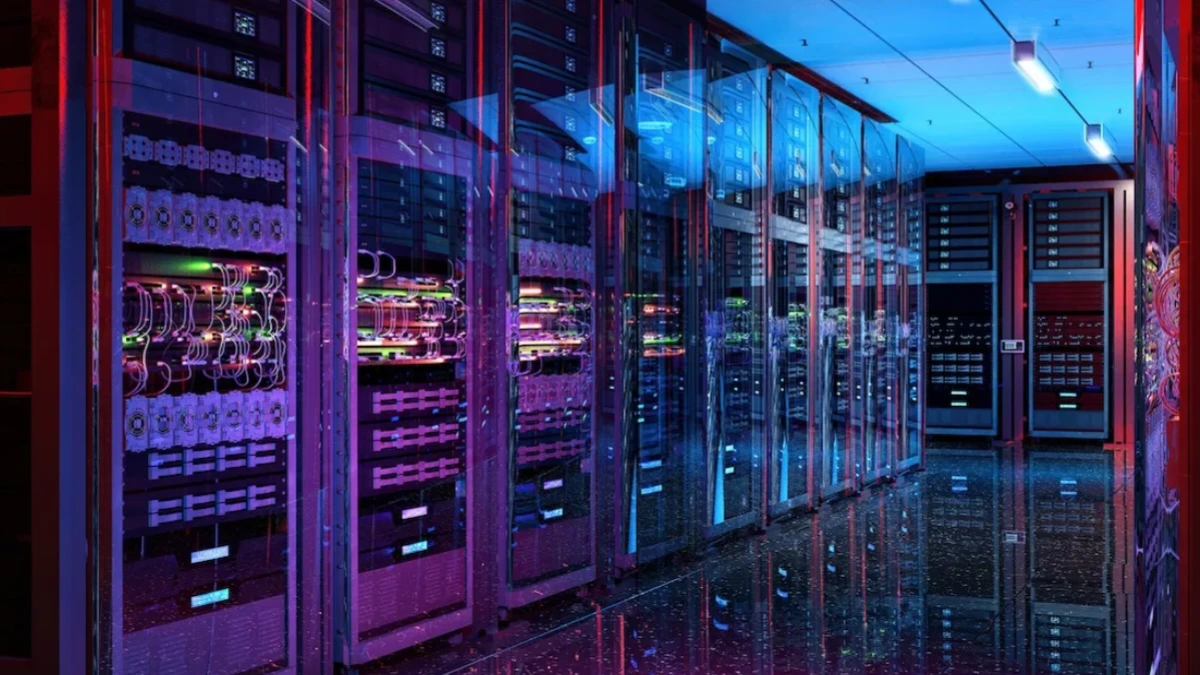The world’s accelerating investment in artificial intelligence has sparked an unprecedented surge in datacenter construction, with global spending projected to reach $3 trillion by 2028.
These sprawling facilities housing the servers that power tools like OpenAI’s ChatGPT and Google’s Veo 3 are becoming the backbone of a rapidly expanding AI economy.
While major technology companies are leading the charge, economists and local leaders remain divided over whether this boom represents sustainable progress or the seeds of another financial bubble.
The AI revolution has turned datacenters into the “new oilfields” of the digital age. Global demand for computing power has soared, driving up valuations across Silicon Valley.
Nvidia recently became the world’s first $5 trillion company, while Microsoft and Apple each hit $4 trillion in market value. Microsoft’s partnership with OpenAI has valued the latter at roughly $500 billion, with some insiders predicting a potential $1 trillion initial public offering as early as next year.
Alphabet, Apple, and Amazon have all reported record revenues boosted by increased demand for AI infrastructure. “Datacenters are the physical embodiment of AI’s future,” said Dr. Elaine Morton, a technology economist at the London School of Economics.
“They represent not just infrastructure, but a reconfiguration of the global digital economy.” The explosion in datacenter spending has raised both optimism and alarm.
According to Morgan Stanley, global datacenter investment will approach $3 trillion over the next three years, with roughly half financed through the cash flow of major US technology firms known as “hyperscalers.”
The remaining $1.5 trillion is expected to come from private credit and other nontraditional funding sources. Analysts warn that this heavy reliance on private credit a fast growing segment of the shadow banking system could expose the broader economy to new risks.
Gil Luria, head of technology research at investment firm DA Davidson, described the situation as “a tale of two markets.”
“The hyperscaler investments are the healthy part of the boom,” Luria said.
“But we’re also seeing speculative projects without secured customers or long-term contracts, financed by debt that may not be sustainable.”
Harris Kupperman, a hedge fund manager, cautioned in a recent blog post that datacenters could depreciate “twice as fast as the revenue they generate,” warning of a mismatch between investment cycles and economic returns.
There are now more than 11,000 datacenters worldwide a fivefold increase over the past two decades. Industry research shows Amazon, Meta, Google, and Microsoft plan to spend more than $750 billion on AI related capital expenditure over the next two years alone.
Manning & Napier, a US investment company, described the scale of spending as “nothing short of incredible.” In the United Kingdom, Microsoft is constructing a major datacenter in Newport, Wales, on the site of a former radiator factory.
California based Equinix has announced a £4 billion facility in Hertfordshire, signaling Europe’s growing role in the infrastructure race.
Yet, not everyone is convinced. Joe Tsai, chair of Alibaba Group, warned earlier this year of early signs of a “datacenter bubble,” noting that some projects are being financed without committed clients.
In Newport, community leaders are hopeful the boom will revive local economies that once depended on heavy industry.
Standing on the concrete floor of the under construction Imperial Park datacenter, Newport City Council leader Dimitri Batrouni said the project represents “a chance to tap into the economy of the future.”
“With cities like mine, we have to make a choice,” Batrouni said. “Do we dwell on the past and try to bring back industries that are unlikely to return, or do we embrace what’s coming next?”
Residents, however, express mixed feelings. Local shop owner Maria Jenkins said she welcomes new jobs but worries about rising housing costs and energy demands.
It’s good for business, but I hope it doesn’t make the city unaffordable for people who already live here, she said. Environmental advocates have also raised concerns about datacenters’ heavy electricity and water use.
Each facility is a massive consumer of resources, said Fiona Reese, director of the UK Green Infrastructure Council. “The industry needs clear sustainability standards before it becomes unmanageable.”
While the AI driven datacenter boom shows no signs of slowing, experts caution that unchecked optimism could carry long term economic consequences.
Morgan Stanley analysts estimate that private credit could fill more than half of the projected $1.5 trillion funding gap, with companies such as Meta already tapping the market for multi billion dollar financing.
If such debt markets overextend, economists warn, the ripple effects could extend far beyond the technology sector. “The eagerness to deploy capital into AI could outpace prudent risk assessment,” said Dr. Morton.
“We’ve seen similar patterns before in housing, in dot-coms, in clean energy. The lesson is to balance ambition with caution.” Still, for many regions, datacenters symbolize hope for renewal.
From Newport to Nevada, construction cranes are rising where factories once stood, fueled by the promise of artificial intelligence.
The $3 trillion global datacenter boom stands at the intersection of faith and fear a testament to humanity’s drive to build the digital future, but also a reminder of the economic fragility that often accompanies innovation.
As the world races to power the next generation of AI, the challenge for policymakers, investors, and communities will be to ensure that today’s optimism does not become tomorrow’s overreach.

